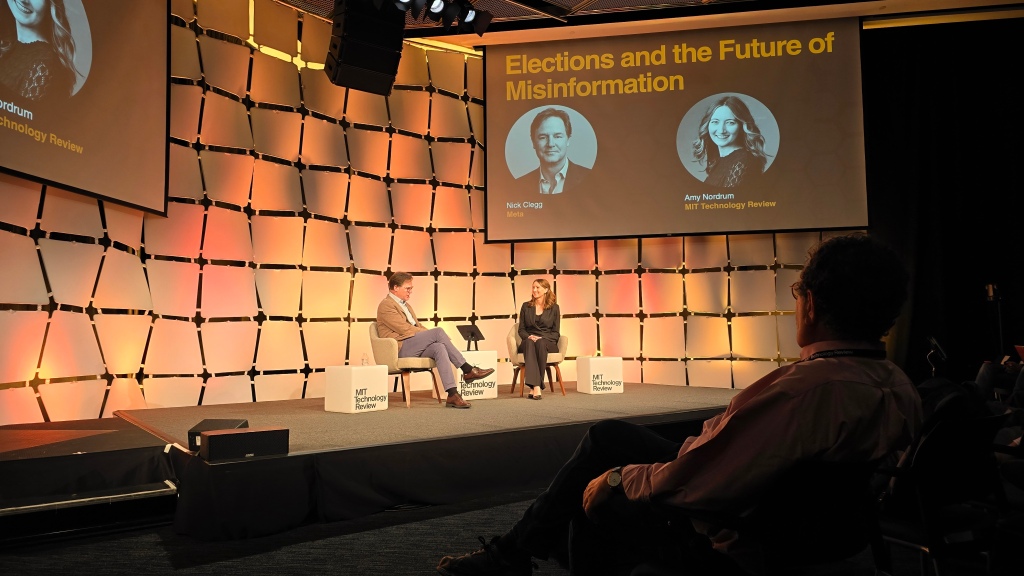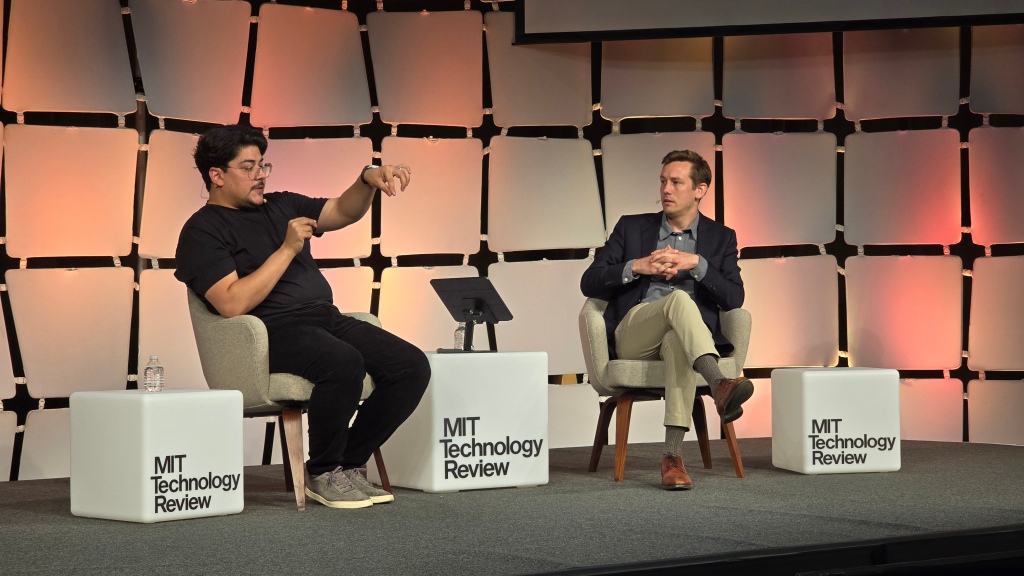The session “Creating a Safe and Thriving AI Sector” at the MIT EmTech Digital conference was led by Asu Ozdaglar, the Deputy Dean of Academics at MIT’s Schwarzman College of Computing. With the poise of a seasoned orator and the precision of a chess grandmaster, Ozdaglar dove into the labyrinth of AI development, focusing on its implications for human flourishing. She began by emphasizing the excitement around generative AI, likening it to an uninvited but intriguing guest who’s here to stay, bringing both charm and chaos to the party.
The Concept of Human Flourishing
Ozdaglar unpacked the concept of human flourishing with the care of an antique dealer handling a priceless vase. She described it as a blend of comfort, health, prosperity, and the capacity for leading meaningful lives. However, she noted, AI might play the role of the mischievous cat that topples this vase if not properly managed, undermining the agency and decision-making capabilities of diverse human communities.
Two Possible Futures for AI
According to Ozdaglar, AI development could follow two divergent paths:
- Enhancement of Human Capabilities: Here, AI would be the fairy godmother, expanding human abilities and helping individuals achieve their dreams more effectively.
- Sideline Human Decision-Making: Alternatively, AI could become the overbearing butler, automating tasks and decisions to the extent that it sidelines humans, reducing their role to mere spectators in the grand drama of life.
The Vision of Autonomous Machine Intelligence
Drawing on the visionary ideas of Alan Turing, Ozdaglar highlighted the pursuit of autonomous machine intelligence – machines with superhuman abilities. This approach, while promising to boost productivity, also risks transforming humans from players to pawns, with AI making all the crucial moves.
Risks of AI Technologies
Ozdaglar identified three primary risks posed by AI technologies, each akin to a plot twist in a thriller novel:
- Excessive Automation: She illustrated this with a chart resembling a game board, where demographic groups experienced wage declines corresponding to the degree of task automation. The losers? Primarily lower-educated workers.
- Manipulation and Privacy Concerns: Examples included the Cambridge Analytica scandal and voice assistants accidentally (or perhaps, conspiratorially?) recording private conversations. AI, it seems, could double as a master manipulator.
- Discouragement of Human Experimentation: Like a schoolteacher confiscating a student’s creativity, AI could discourage new information production. Ozdaglar pointed to a sharp decline in content creation on Stack Overflow following the introduction of ChatGPT, with the platform’s vibrancy fading faster than a cheap dye in the wash.
Pro-Human AI Vision
Ozdaglar championed a pro-human AI vision, advocating for human-machine symbiosis over machine supremacy. Inspired by early computer scientists like Douglas Engelbart, this vision sees humans and machines working in harmony, much like a well-rehearsed duet, rather than machines overtaking the solo performance.
Regulatory Frameworks
Emphasizing the need for a robust regulatory framework, Ozdaglar proposed starting with existing laws and applying them to AI systems. Imagine a meticulous gardener, she suggested pruning AI’s wild growths and guiding its branches along established trellises, particularly in high-risk areas like healthcare.
Technical Improvements and Oversight
Ozdaglar outlined several technical improvements and oversight mechanisms essential for safe AI development:
- Verifiable Attribution: Ensuring that the origin of AI-generated content can be traced, like tracking the source of a mysterious whisper in a crowded room.
- Auditing and Transparency: Implementing systems for regular auditing and transparency, ensuring that AI doesn’t become the shady character lurking in the shadows.
- Guaranteed Forgetting: Developing mechanisms to remove information from AI models, protecting privacy with the efficiency of a witness protection program.
Encouraging Societally Beneficial AI
To foster human flourishing, Ozdaglar stressed the need for research and development focused on societally beneficial applications. This involves creating a collaborative environment among government, academia, and industry leaders to nurture AI projects that serve the common good, much like a communal garden tended by dedicated volunteers.
Audience Interaction and Questions
During the Q&A session, Ozdaglar responded to questions with the deftness of a seasoned diplomat. She addressed the importance of global cooperation in AI regulation and the need for enforceable contracts among AI service providers. She acknowledged the challenges of aligning AI development with human flourishing, particularly given varying international regulations and profit motives.
Conclusion
In her closing remarks, Ozdaglar called for a shift towards a pro-human AI vision, emphasizing the harmonious interplay between humans and machines. She underscored the importance of balancing innovation with ethical considerations and fostering ongoing dialogue among stakeholders to create a safe and thriving AI sector.
This session underscored the transformative potential of AI, provided it’s guided by a thoughtful and principled approach. By aligning AI development with human flourishing, the AI community can ensure that this powerful technology serves as a force for good, rather than a rogue agent in the annals of technological advancement.




Leave a comment